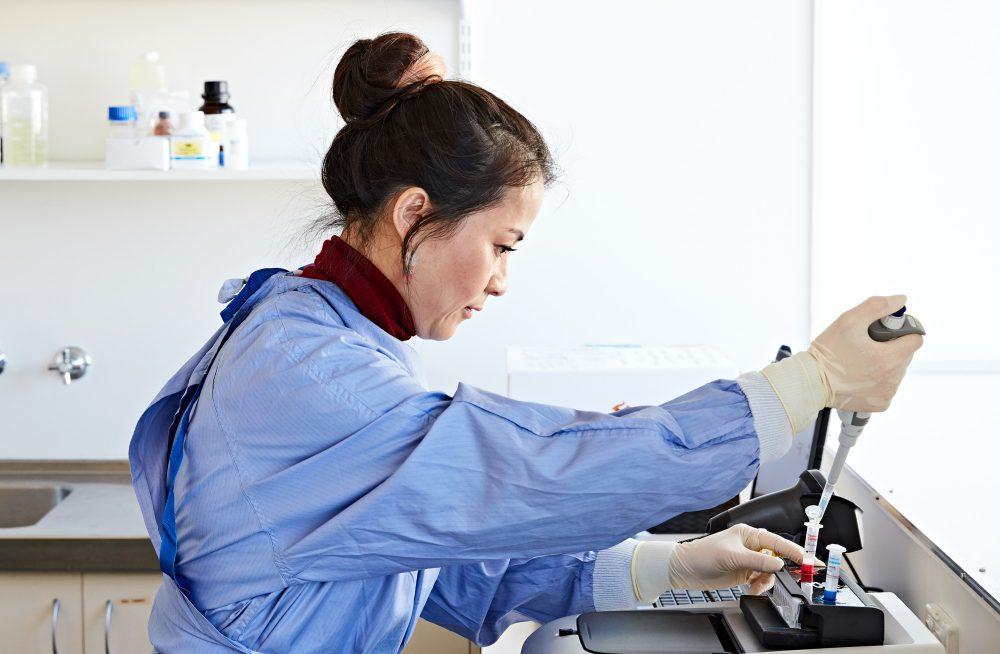
Whether Australia is adequately prepared for a future pandemic should be a key issue on our national agenda. Over the past few years, antimicrobial resistance has become an area of growing concern for our health security. According to the OECD, Australia is particularly vulnerable as our antibiotic usage is significantly higher than the organisation’s average.
The OECD has estimated that nearly 10% of infections in Australia are antimicrobial resistant and that an average of 290 people die each year due to multidrug-resistant bacterial infections. It forecasts that this number is likely to grow significantly in coming years.
DMTC (formerly the Defence Materials Technology Centre) conducts research and development in defence and defence-related sectors. Its medical countermeasure (MCM) program is undertaking applied R&D in this pivotal civilian and military area. The MCM program deals with both defence and public health concerns and encompasses a vaccine, therapeutic and diagnostic response to chemical, biological and radiological threats, emerging infectious diseases and pandemics. The program has been backed by funding and ongoing support from the Commonwealth Scientific and Industrial Research Organisation and the Defence Science and Technology (DST) Group through its Next Generation Technologies Fund.
This year’s report on antimicrobial use and resistance in Australia highlighted that several of the country’s most concerning drug-resistant bacteria could also be threats to the military. Other pathogens, such as the bacterium that causes anthrax, have the potential to be both a public health concern and a biological warfare agent.
DMTC’s work addresses the nexus between biological warfare agents and those of public health concern as often they are the same pathogen. Due to the rising incidence of highly infectious diseases around the world, it’s more important now than ever that Australia builds its capability and capacity to deliver MCMs in response to infectious disease outbreaks. Collaborations between government agencies, research institutions and the private sector are the most effective and timely way to address such concerns.
The MCM program enables this kind of collaboration to facilitate and accelerate R&D for vaccines, therapeutics and diagnostics that will benefit both the Australian Defence Force and the broader Australian community. The program also facilitates collaboration with a range of international bodies to share the burden of developing products to counter potential threats.
DMTC’s objective is to strengthen Australia’s national preparedness to respond to such threats. The 2017 national capability audit, commissioned by DST Group, highlighted that while Australia has made improvements in the ability to develop MCMs, further development and increased coordination of in-country networks is required. These are key elements which can support Australia’s pandemic response strategy.
DMTC believes that Australia needs a highly advanced MCM development capability to deal with a more serious infectious disease or an international health disaster, like an outbreak of Ebola. If an international pandemic were to occur, Australia’s borders would likely be shut down, leaving us reliant on the national stockpile, which may or may not contain the correct medical countermeasure. If we did not have the correct product in the stockpile, urgent action would be required to deliver bespoke, in-country MCM solutions.
Recently, two diagnostic projects under DMTC’s MCM program have been successfully completed. One, a point-of-care rapid diagnostics device, will test people for multiple defence-relevant infectious diseases in remote locations, using only one sample and test cartridge. The other, a diagnostic product targeting the bacterium that causes Q fever, was an international collaboration with DMTC leading Australia’s contribution.
DMTC has another eight projects running, two of which are specifically targeted at combating antimicrobial resistance in Q fever and the bacterium behind a disease called melioidosis.
Q fever can present as an acute illness causing respiratory diseases such as pneumonia, or as a chronic illness, which left untreated most often results in endocarditis, a fatal condition of the heart. It has a very low infectious dose, which contributes to its classification as a dangerous pathogen for potential biological warfare use.
There were 200 cases of acute Q fever reported in members of the US military who were deployed in Iraq from 2003, as well as 90 cases among UK soldiers deployed in Afghanistan between 2003 and 2014. In Australia, this endemic disease still has significant rates of infection, both in New South Wales (3.1 cases per 100,000 people) and Queensland (6.3 cases per 100,000 people).
In the Northern Territory, melioidosis is a significant health concern, with up to 50 per 100,000 people affected by the condition. Melioidosis is an example of the intersection between public health threats and potential biological warfare threats, as the US Centers for Disease Control and Prevention lists it as a category B bioterrorism agent. This is due to the relative ease of production and its clinical ambiguity.
One of the projects underway is being led by the University of Western Australia. The project investigates novel antivirulence compounds in treating multiple biological warfare pathogens, in particular those which cause Q fever and melioidosis. The team has made significant progress and has refined potential targets for inhibition of pathogen growth. Next, the team will move to start preclinical trials.
DMTC is also involved in a project to develop a next-generation Q fever vaccine.
If these two projects are successful, they will be groundbreaking in the development of Australia’s MCM capability and capacity, and will further reduce our reliance on international supplies of vaccines, therapeutics and diagnostics.
DMTC is confident that, with the right management, collaboration and investment, Australia has the novel ability, industry and infrastructure to deliver a strong MCM product development system. Such a system would provide significant opportunities for jobs, skills and manufacturing growth in this new area of the health economy.
Most importantly, it would support a sovereign industry that could protect and even save Australian lives against chemical, biological or radiological threats—whether natural or manmade—and help to counter the growing threat of antimicrobial resistance.